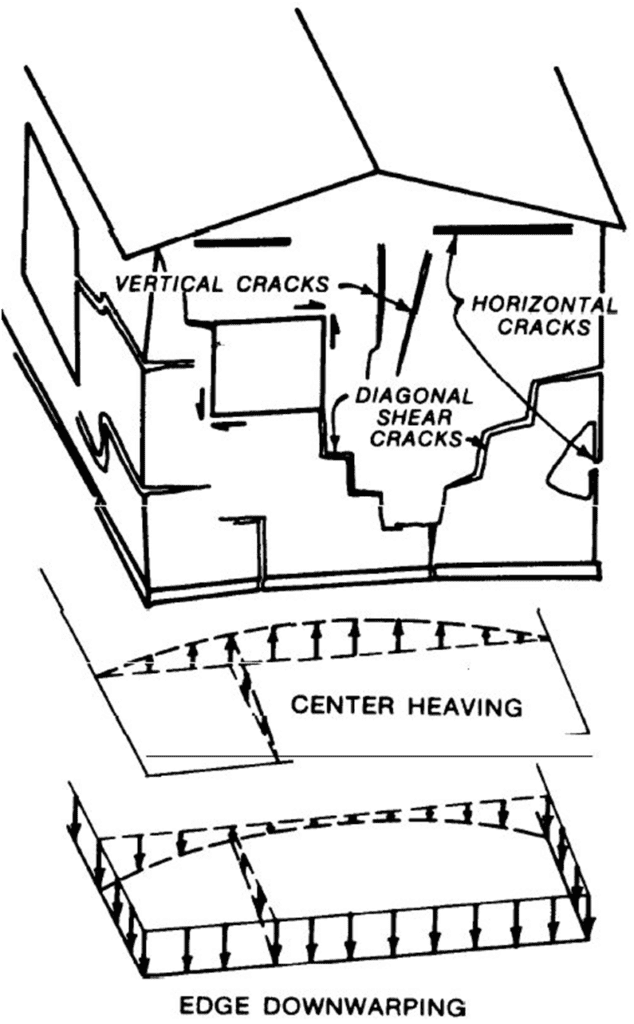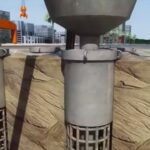What are Patterns of Foundation Heave?
The movement of expansive soil caused by variations in its moisture content is foundation heave. There are various patterns of foundation heave, including doming, edge, cyclic, and lateral movement.
Differential movement of expansive soil is more damaging than a uniform heave. It mostly affects lightly loaded structures like one or two-storey structures, highways, retaining walls, canal linings, and reservoir linings.
Building damage due to heave occurs within a few months after construction and may develop over about five years, or it may not be visible till some changes occur in the soil moisture.
What are Patterns of Foundation Heave?
- Doming or Edge Down Heave
A doming heave causes the external walls in the superstructure to lean outward, initiating horizontal, vertical, and diagonal fractures with larger cracks near the top.
The roof of a building restrains the rotation due to differential vertical movement, causing additional horizontal fractures near the roofline at the top of the wall.
- Cyclic heave
A cyclic expansion-contraction associated with drainage, frequency, and amount of rainfall and evapotranspiration may be superimposed on a long-term heave close to the perimeter of the structure.
Localized heave may occur around the ponded area or water leaks. Evapotranspiration is the moisture evaporation from the ground surface and the transpiration of moisture from heavy vegetation into the atmosphere.
- Edge Heave
Edge or dish-shaped heaving of portions of the perimeter of a building may be noticed relatively soon after the construction, especially in semi-arid climates on construction sites with preconstruction vegetation and a lack of topographic relief.


Lateral Movement
Lateral movement can compromise the structural integrity. The lateral thrust of expansive soil combined with horizontal force up to the passive earth pressure can cause basement walls to bulge and fracture.
Basement and supporting walls cannot withstand the same amount of movement as a cantilever retaining wall, so they must be designed to be more stable. Downhill soil creep of cohesive expansive soils can cause harm to foundations and walls constructed on slopes steeper than 5 degrees. In addition to generating shear force on shaft foundations, soil movement downhill can also generate shear force. From a few inches to several feet, the profundity of creep can vary.
Disclaimer: This content is provided solely for your review. Erusu Consultants takes no liability for this article. The reader is advised to form their own opinion. Please consult a Structural Engineer before making any final decisions.






